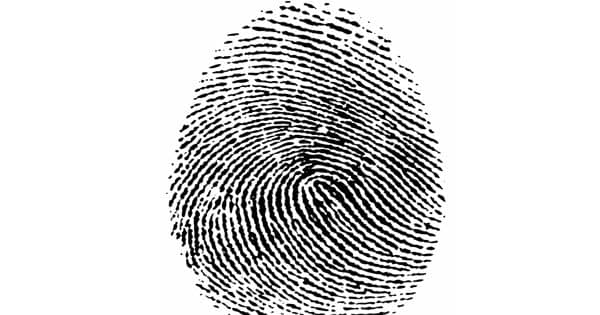Human fingerprints have a self-regulating moisture mechanism
Fingerprint’s moisture-regulating system enhances human interaction. Human fingerprints have a self-regulating moisture system that not only lets us prevent losing our smartphone, but may help scientists build improved prosthetic arms, autonomous robots, and virtual reality worlds, according to a recent report.
Primates-including humans, apes, and monkeys-have developed epidermal ridges on their hands and feet with a greater density of sweat glands than anywhere in their body. This enables the precise control of skin moisture to provide a higher degree of grip when handling objects.
Fingerprints help to increase friction when in contact with smooth surfaces, boost grip on rough surfaces, and enhance tactile sensitivity. Their moisture-regulating mechanism ensures the best possible hydration of the skin’s keratin layer to maximize friction.
Researchers at the University of Birmingham have collaborated with colleagues at academic institutions in South Korea, including Seoul National University and Yonsei University—now published in Proceedings of the National Academy of Sciences (PNAS).
Co-author Mike Adams, Professor of Product Engineering and Manufacturing at the University of Birmingham, said The epidermal ridges on their hands and feet have evolved. During interaction with solid objects, fingerprint ridges are essential for grip and precision manipulation. They control moisture levels from external sources or sweat pores so as to optimize friction and prevent friction.
“Understanding the influence of finger pad friction will help us to develop more realistic tactile sensors — for example, applications in robotics and prosthetics and haptic feedback systems for touch screens and virtual reality environments.”
Ultrasonic lubrication is widely used in touch screen displays to offer sensory ‘haptic’ input, but its efficacy is decreased when the user is dry relative to wet finger pads. Moreover, being able to differentiate between fine-textured surfaces, such as textiles, by touch, depends on mediated lateral movements, but the lack of sliding contact prevents our ability to recognize what we are actually touching.
Fingerprints are peculiar to primates and koalas—appearing to have a secondary purpose of improving the evaporation of excess moisture whist, which creates a buffer of moisture at the base to improve grasp.
Researchers have observed that when the finger pads are in contact with impermeable materials, the sweat from the pores in the ridges makes the skin smoother and therefore greatly increases friction. However, the resultant rise in ridge compliance allows the sweat pores to gradually become plugged and thereby removes additional moisture that would reduce our ability to grip objects.
Using high-tech laser-based imaging technology, scientists have discovered that moisture control can be clarified by the combination of this sweat pore blocking and the increased evaporation of excessive moisture from external wetting due to the unique cross-sectional structure of the epidermal furrows when in contact with the object.
These two tasks help in the preservation of the optimal amount of moisture in the fingerprint ridges, which maximizes friction, whether the finger pad is originally wet or dry.
“This dual-mechanism for managing moisture has provided primates with an evolutionary advantage in dry and wet conditions — giving them manipulative and locomotive abilities not available to other animals, such as bears and big cats,” said Professor Adams.















